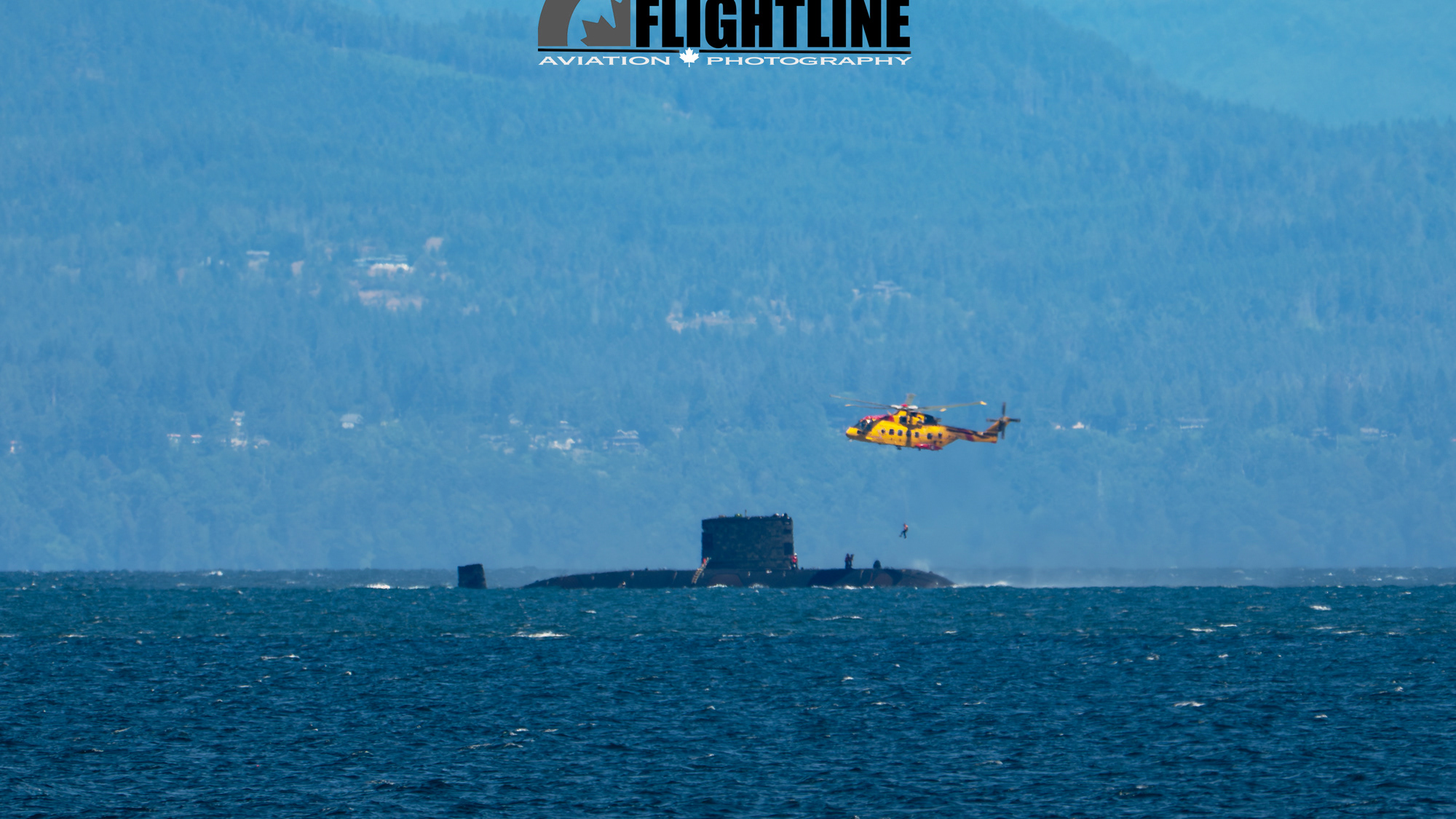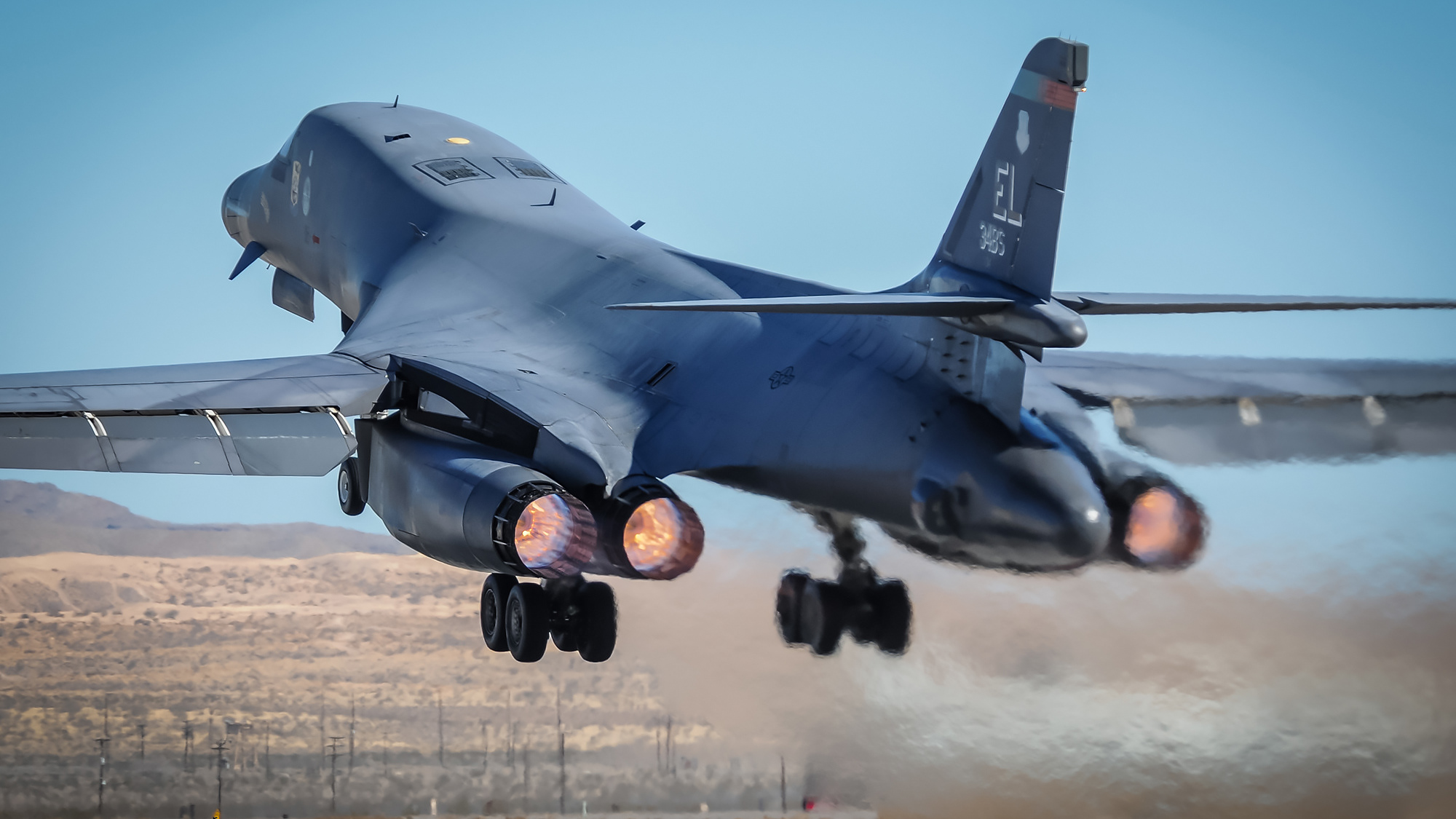TRIDENT FURY was held from May 8-19, 2006 and was the largest multi-national, joint and combined exercise ever held on the West Coast of Canada. The two week coalition based exercise was hosted by Joint Task Force Pacific Headquarters (JFTP) and executed by the Pacific Fleet Commander. The main objectives during the exercise were to build capability skills and expertise that can be deployed anywhere in the world, and allow the Canadian Forces to exerciseits sovereignty at home and abroad. " Exercise Trident Fury provides an excellent training opportunity for the
Canadian Forces," said Commodore Bruce Donaldson, Commander of the Canadian Pacific Fleet. "This exercise is
designed to validate tactics, to hone operator and team skills, and to enhance joint and allied interoperability in challenging, littoral warfare enviroment," he said. The Canadian Navy lead the exercise that included participants from NATO, United Kingdom, and units from Canada and the United States, in all, over 2,000 participants were
involved in Trident Fury 2006.
The exercise uses the area around Vancouver Island as the "playground" for Trident Fury. With a made up scenerio of two countires at the verge of war with one or two other countries in a neutral position. With Vancouver Island geographically split in half (north and south), the "bad country" known as Orange and the "good country" known as Green. Between these two "countries" was a DMZ. With scripted scenerios, the participants would engage each other in the air, sea and on the ground. The scripted missions would also serve as a final exam for the sailors that were involved with the Operations Room Officer(ORO) course. These sudents were aboard the Canadian Frigates, HMCS Vancouver and Winnipeg.
Canadian Forces," said Commodore Bruce Donaldson, Commander of the Canadian Pacific Fleet. "This exercise is
designed to validate tactics, to hone operator and team skills, and to enhance joint and allied interoperability in challenging, littoral warfare enviroment," he said. The Canadian Navy lead the exercise that included participants from NATO, United Kingdom, and units from Canada and the United States, in all, over 2,000 participants were
involved in Trident Fury 2006.
The exercise uses the area around Vancouver Island as the "playground" for Trident Fury. With a made up scenerio of two countires at the verge of war with one or two other countries in a neutral position. With Vancouver Island geographically split in half (north and south), the "bad country" known as Orange and the "good country" known as Green. Between these two "countries" was a DMZ. With scripted scenerios, the participants would engage each other in the air, sea and on the ground. The scripted missions would also serve as a final exam for the sailors that were involved with the Operations Room Officer(ORO) course. These sudents were aboard the Canadian Frigates, HMCS Vancouver and Winnipeg.
HARDWARE
The Canadian Navy operated four warships; HMCS Algonguin, Winnipeg, Vancouver and Yellowknife,
auxillaries (HMCS Oriole and Fleet Diving Unit vessels) and two United States Navy vessels; USS Ingrham
and USNS Bridge. The Canadian Army also took part in the exercise. The 74 Communications Group and 4 Air Defence Regiment deployed west of Williams Lake, in the Coast Mountain Range to defend against simulated air attacks and to test communications, command and control links and interoperability.
Aircraft participation was considerably higher than last years inaugrual exercise. Victoria International
Airport was host to American F-15 Eagles, E-2C Hawkeyes, a Royal Air Force E-3D Sentry, Alpha Jets from
Top Aces Consulting and home based Sea Kings. 200 KM north of Victoria is the only military base
on Vancouver Island, 19 Wing Comox. They hosted CF-18 Hornet's, two NATO AWACS and Aurora's that
are based at Comox. Other participating aircraft flew from the continental U.S. and returned to their
respective bases after missions, these aircraft included; B-52 Stratofortress, F-15 Eagle's, F-16's Fighting
Falcon's, KC-135 Stratotanker's, EA-6B Prowler's, F/A-18E and F/A-18F Super Hornet's and civilian
operated tankers from Omega.

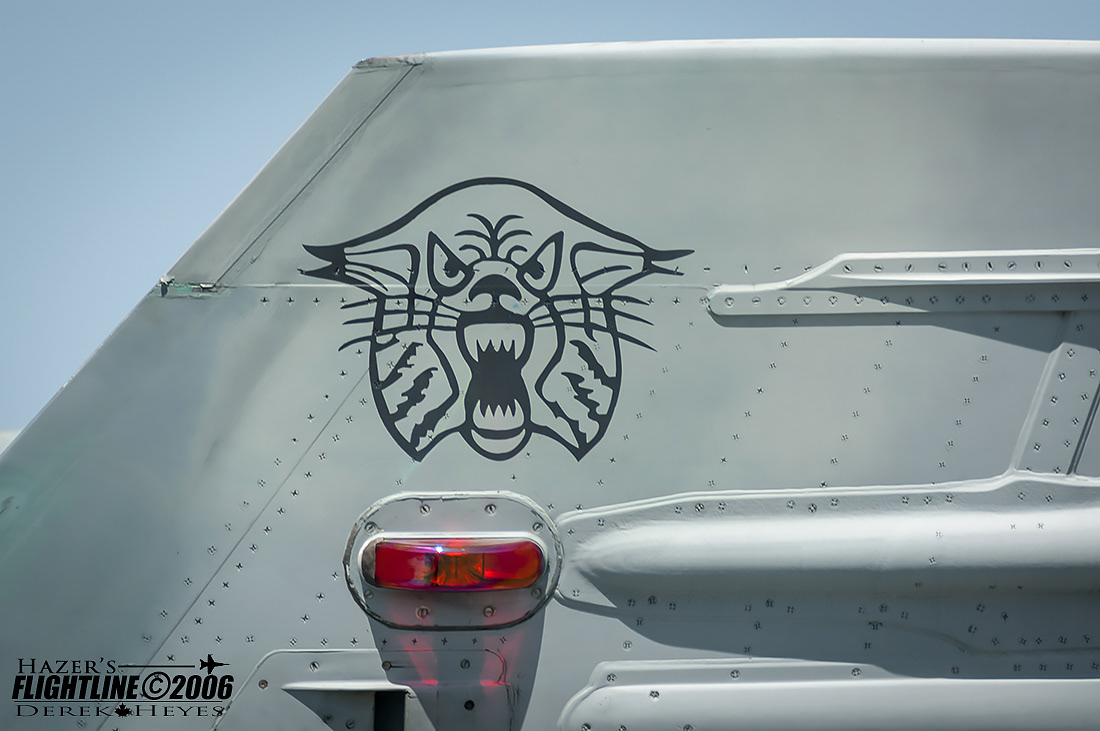





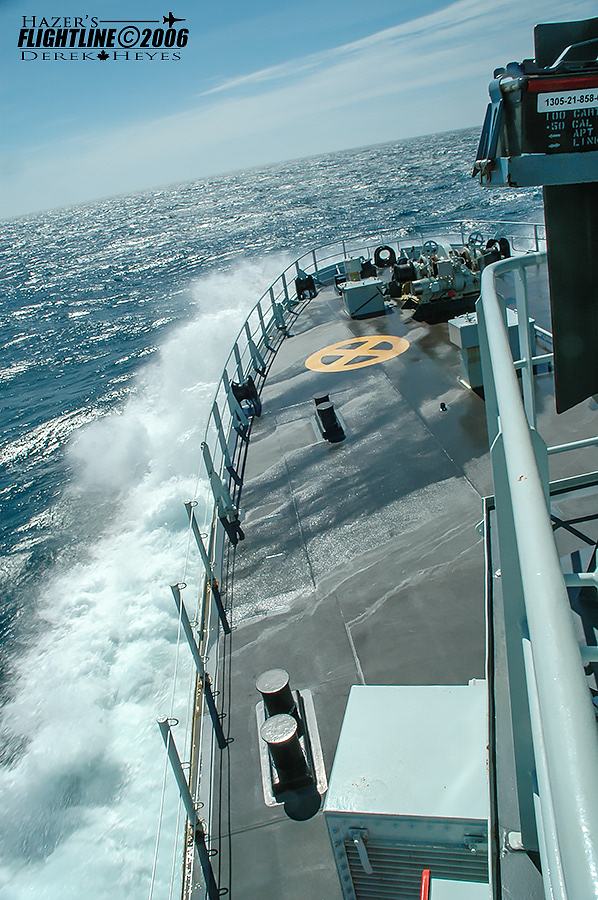




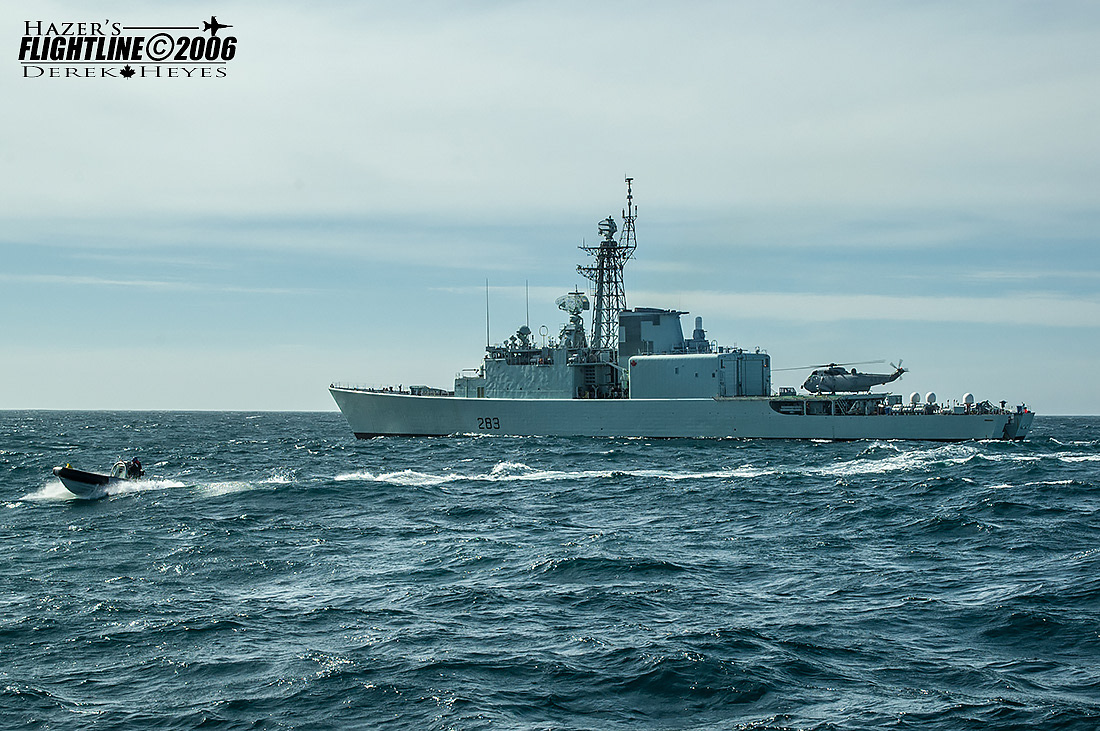








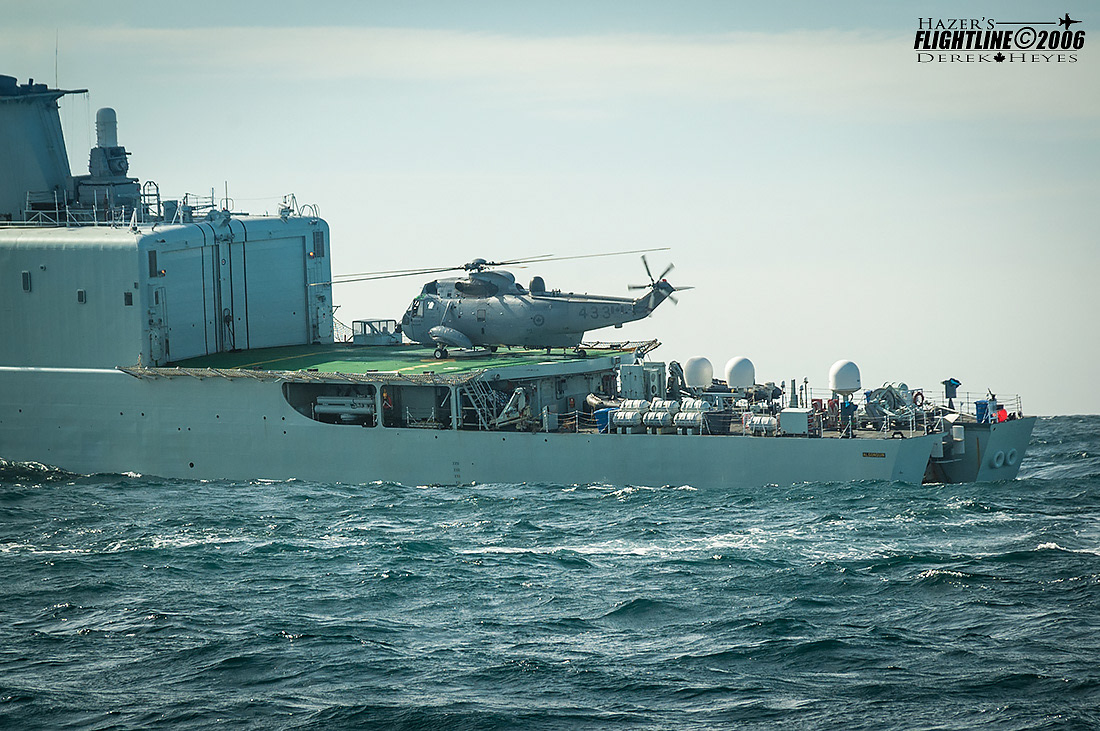





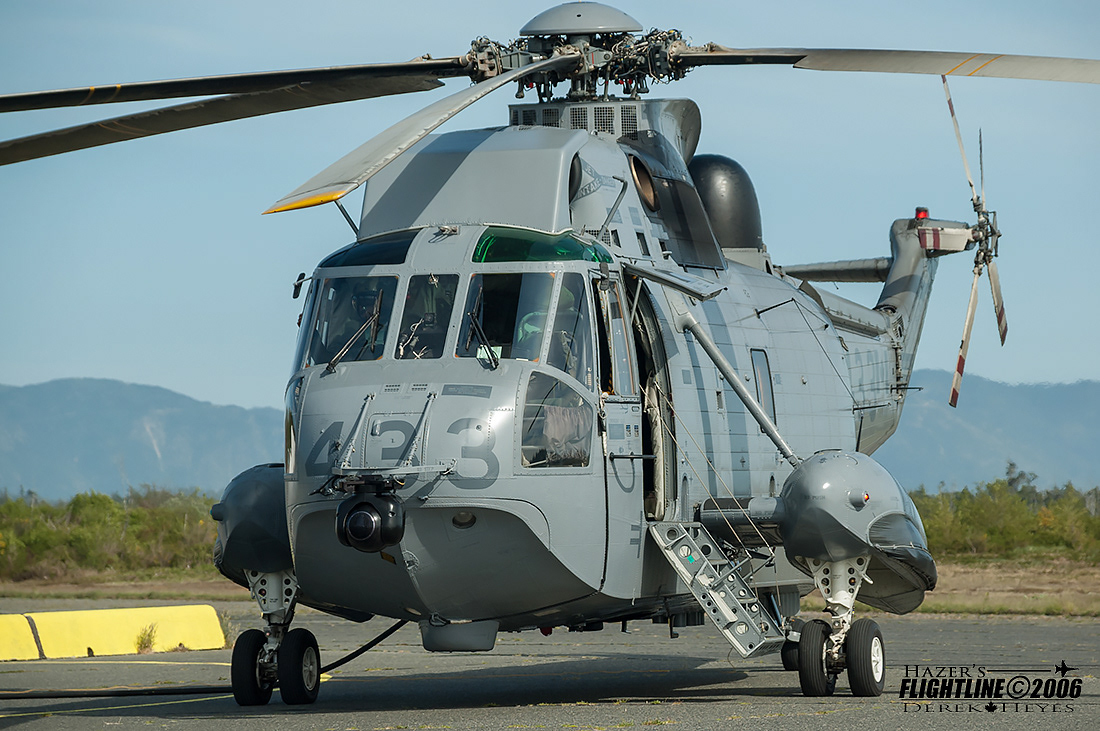




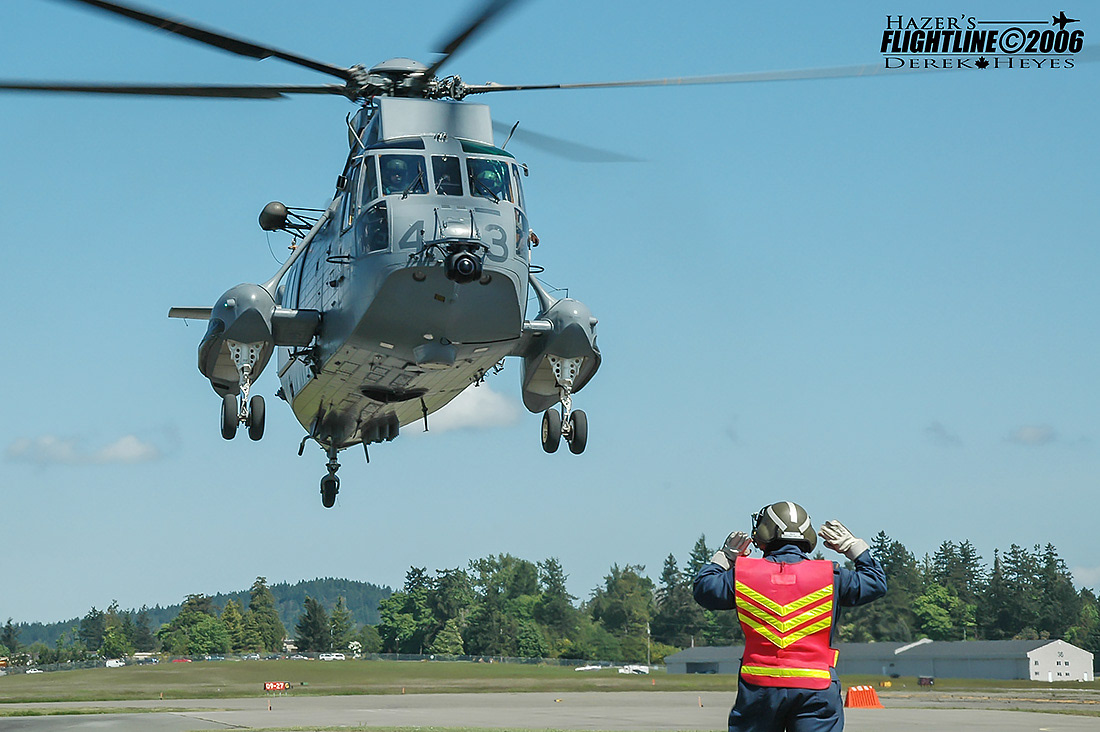
TRAINING MISSIONS
Some of these aircraft were used at different times during the exercise, the Super Hornet's only taking part
during one mission which was their strike of the month training. CF-18 pilot's from 410 "Cougar" Squadron that were involved with the Fighter Weapons Instructor Course (FWIC) took part in the exercise for a few days as well. Their
missions were one of the first's for Trident Fury, the firing of live AIM-9 and AIM-7 missiles against a drone.
They also took part in air to ground missions, dropping Laser Guided Bombs (LGB's) using their NiteHawk pods. This
was a great example of what Trident Fury is shaping up to be, incoporating other Canadian training courses within
the scenerios of the exercise. The other CF-18 unit also got in on the action, 416 "Lynx" Squadron was involved with live strafing runs during missions. B-52H bombers flew from Minot AFB, located in North Dakota, to take
part dropping munitions such as mines into the ocean over the range. F-16C from the 194th FS were also involved with a intercept over the west coast on Vancouver Island during the first day of flying. This variety of aircraft operating in the skies of Canada's west coast was a first! The overall consensus from participants is that Trident Fury delivers a realistic training with the ability to fly over varied enviroments, thanks to Canada's West Coast terrain where flying in the mountains, valley's and over water can be attained (sometimes in the same mission with supersonic flight) - not something you can find in the busy skies in the U.S. and Europe!
Some of these aircraft were used at different times during the exercise, the Super Hornet's only taking part
during one mission which was their strike of the month training. CF-18 pilot's from 410 "Cougar" Squadron that were involved with the Fighter Weapons Instructor Course (FWIC) took part in the exercise for a few days as well. Their
missions were one of the first's for Trident Fury, the firing of live AIM-9 and AIM-7 missiles against a drone.
They also took part in air to ground missions, dropping Laser Guided Bombs (LGB's) using their NiteHawk pods. This
was a great example of what Trident Fury is shaping up to be, incoporating other Canadian training courses within
the scenerios of the exercise. The other CF-18 unit also got in on the action, 416 "Lynx" Squadron was involved with live strafing runs during missions. B-52H bombers flew from Minot AFB, located in North Dakota, to take
part dropping munitions such as mines into the ocean over the range. F-16C from the 194th FS were also involved with a intercept over the west coast on Vancouver Island during the first day of flying. This variety of aircraft operating in the skies of Canada's west coast was a first! The overall consensus from participants is that Trident Fury delivers a realistic training with the ability to fly over varied enviroments, thanks to Canada's West Coast terrain where flying in the mountains, valley's and over water can be attained (sometimes in the same mission with supersonic flight) - not something you can find in the busy skies in the U.S. and Europe!
FIRST'S FOR TRIDENT FURY
This year saw many significant first's for the exercise and the Canadian Forces.
- first time a Canadian warship on Canada's west coast has fired a Sea Sparrow missile in Canadian waters.
- first firing of live AIM-9 Sidewinder and AIM-7 Sparrow missiles on Canada's west coast.
- first time CF-18's have used a civilian tanker for mid-air refueling.









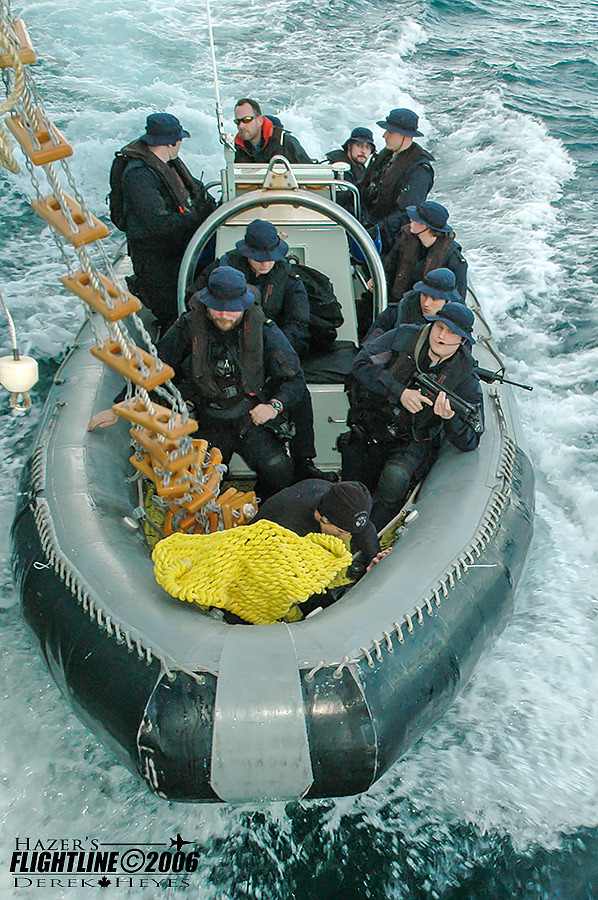
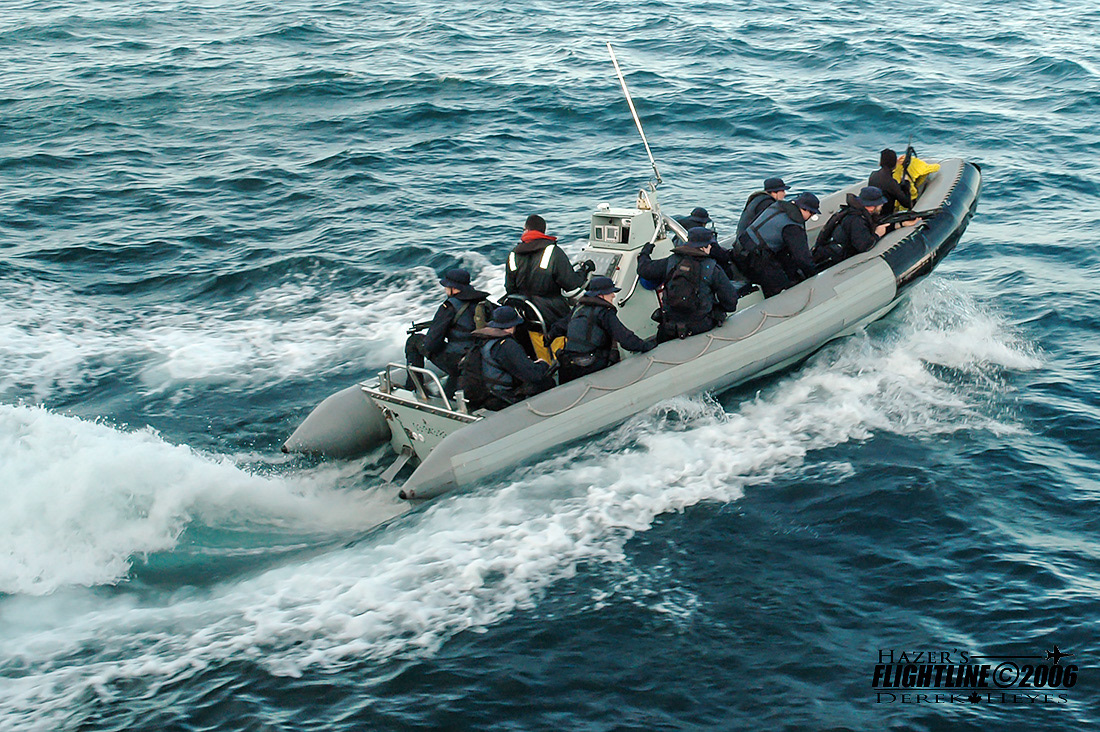







PARTICIPATING AIRCRAFT
F-15C/D Eagle - 1st Fighter Squadron "FIGHTIN FURIES" - Victoria International Airport
E-2C Hawkeye -VAW 117 "WALLBANGERS"- Victoria International Airport
E-3D Sentry AWACS -No. 23 Squadron RAF - Victoria International Airport
Alpha Jet- -Top Aces Consulting - Victoria International Airport
CH-124 Sea King - 443 "Hornet's" - Victoria International Airport/ HelAirDets on ships
CF-18M - 416 "Lynx" and 410 "Cougars" (FWIC) -19 Wing Comox
E-3B AWACS - NATO - 19 Wing Comox
CP-140 Aurora - 407 "DEMON" -19 Wing Comox
EA-6B Prowler VAQ 135 "BLACK RAVENS" NAS Whidbey Island
F/A-18E VFA-14 "TOP HATTERS" NAS Whidbey Island
F/A-18F VFA-41 "BLACK ACES" NAS Whidbey Island
707 tanker OMEGA Civilian Contracting NAS Whidbey Island
KC-135 Stratotanker - Fairchild AFB
F-15 Eagle123rd FS "Red Hawks" ANG -Portland IAP
B-52H Stratofortress 23rd BS "Bomber Barons" - Minot AFB
F-16C Fighting Falcon 194th "Griffins" ANG -McChord AFB
OUT TO SEA
I had the opportunity to sail with the Canadian Navy aboard the HMCS Algonquin DDG 283, the flagship of the Pacific Fleet. This ship was used as the operations platform for the exercise and the aircraft would be talking to the ship as they entered the range, once contact was made they would marshall before starting their push into the range. During my short time at sea I was able to witness the professionalism and dedication of the sailors of our Navy. Whether it was watching the "war" unfold in the operations room, crossing the ocean in a RIB with the Boarding Party to enforce the "trade embargo" scenerio of Trident Fury or flying in the CH-124 Sea King during poor weather. The men and women of the Algonquin were fabulous hosts and made my first visit to sea a comfortable and unforgetable experience!
One of the hightlights of the cruise was the last day of the exercise. Known as Photo Ex, the mission involved the Naval fleet to form up in formation while the aircraft from Trident Fury roared overhead, one type at a time. This included two B-52's, two Hawkeye's, four F-15's, and four CF-18's. This was to be captured by two Sea Kings with photographers in each. As we departed the ship in "Stinger 33", we were still 30 minutes away from the "go". As we started flying in formation with the other two Sea Kings (the other Sea King was to fly within the ships as part of the photo), we could hear each flight checking in to operations. Off in the distance you could see the aircraft marshalling, waiting for their time to roar over the fleet at 800 ft. As we were hanging out of our Sea King enjoying the nice formation flying of the Sea Kings, we lost sight of the fleet.......the weather was changing. The fleet was heading into a fog bank and we could no longer see them. The weather was getting worse and the helo's were going to have low fuel issues if a decision was not made quickly. It was decided that the aircraft would fly close to the helo's and just get their photo taken. Little did I know that only one of the Sea Kings would be involved in the shoot. Sea King " Eagle 406" had a crew from CTV News to cover the event. I have not seen any video or stills from this fly by but it was one of those uncontrollable things when dealing with aviation photography. Earlier that day, we were treated to a great flyby from the RAF Sentry. "DannyBoy" came by the HMCS Algonquin at 08:30 and low 500ft over the ship. He made two passes over the ship and then climbed to altitude before the start of the morning mission. Seeing a Sentry flying low at 500ft is rare and over the ocean, even more so. Not sure if "Mossy" was flying the Sentry, but if you were, "THANKS!, it looked great!"







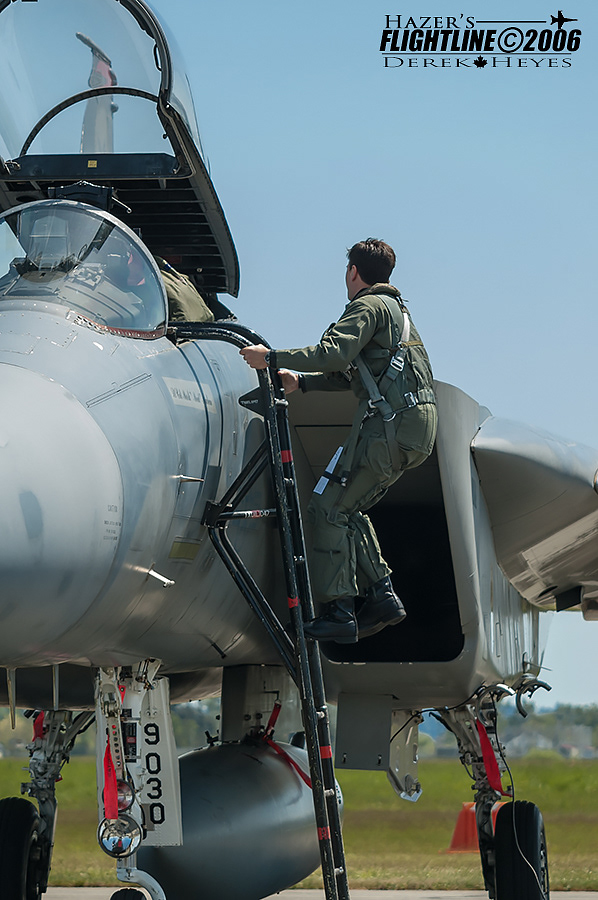
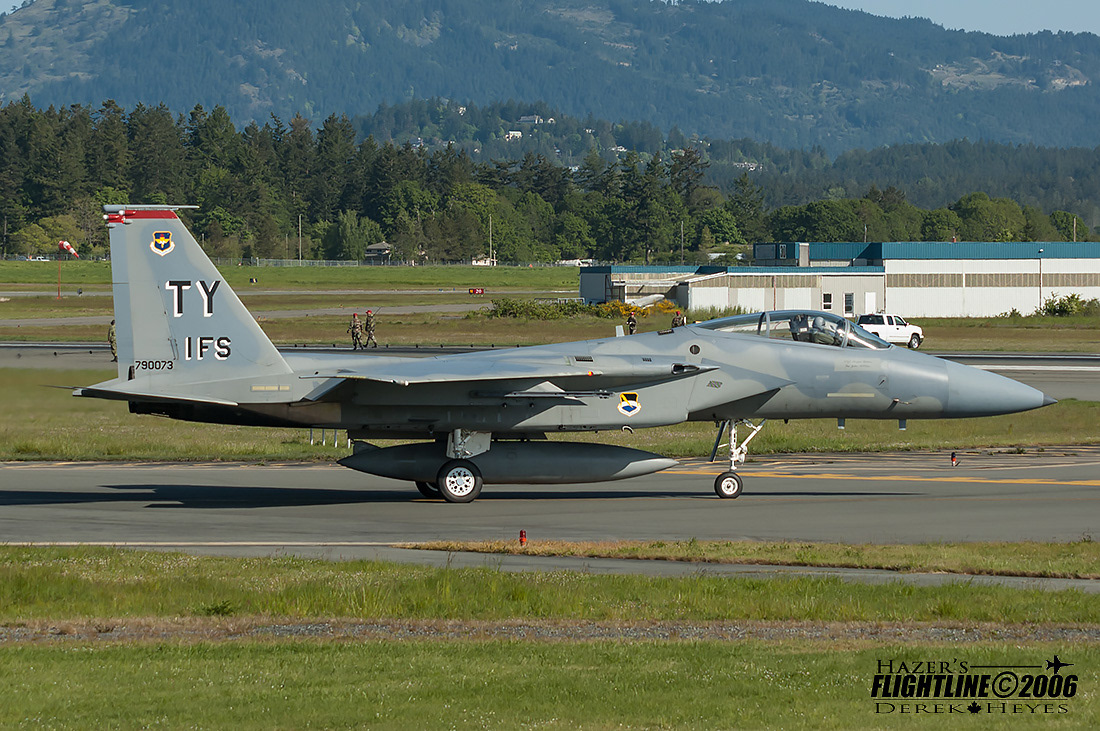
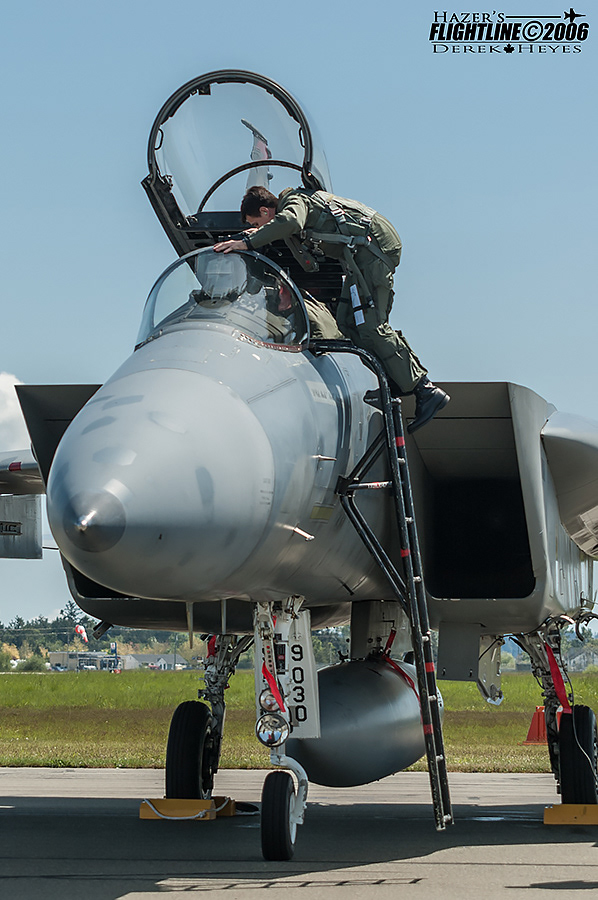





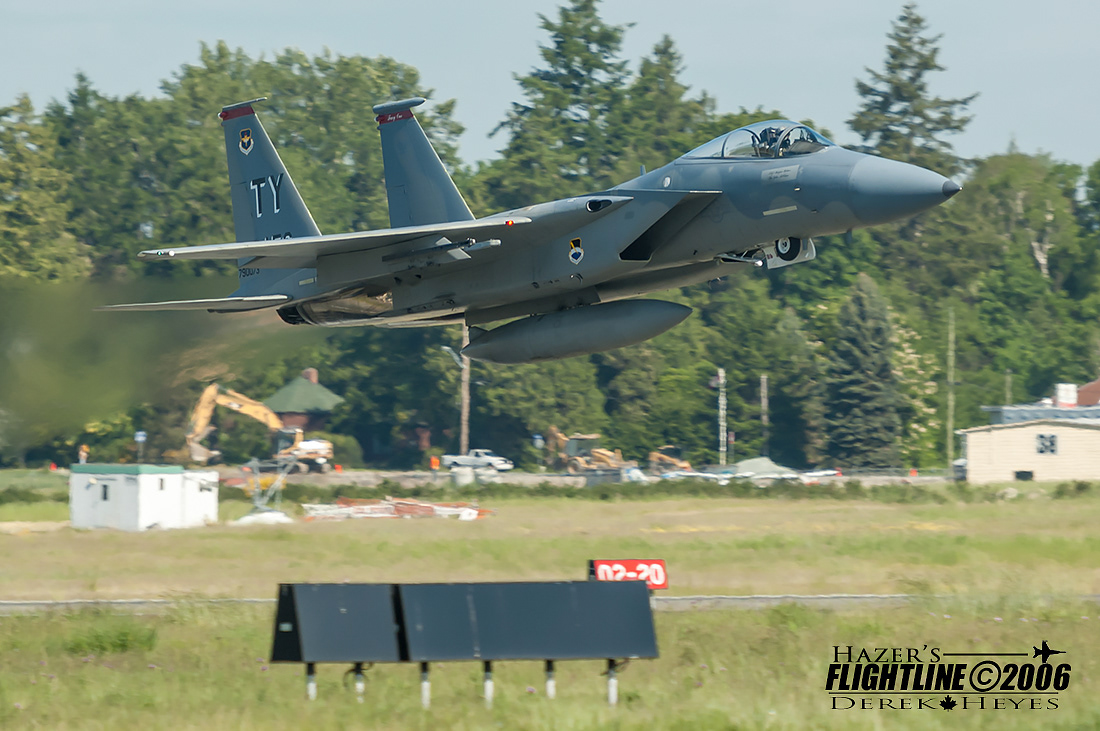

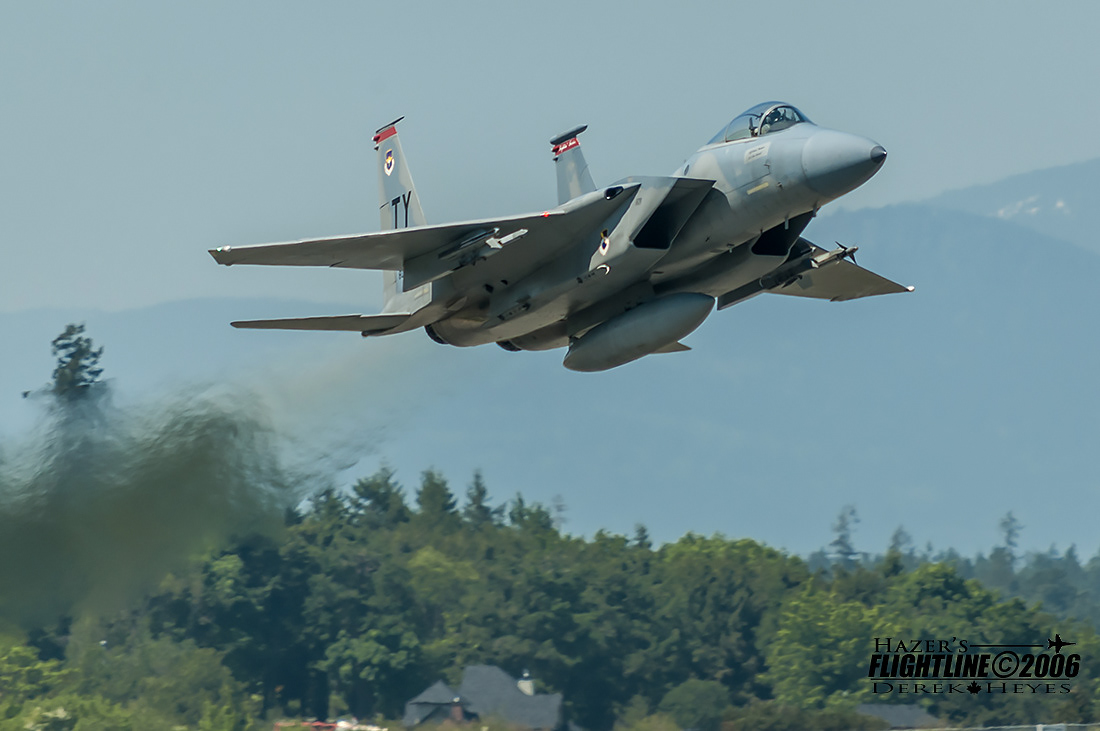













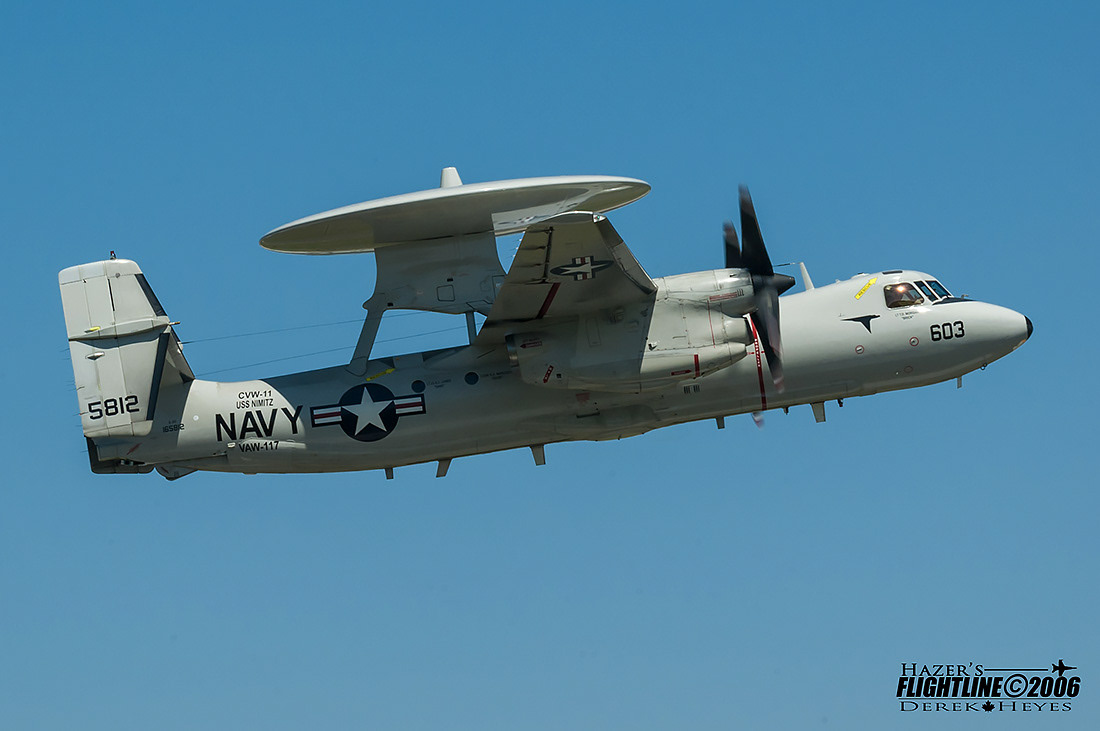


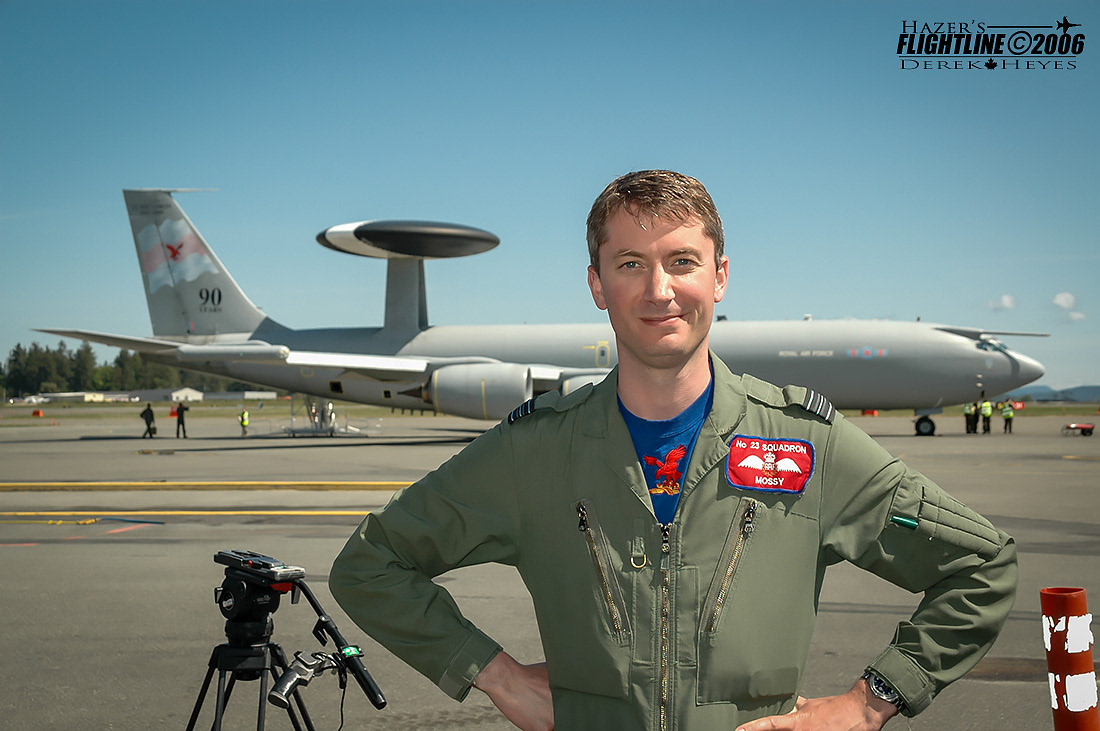





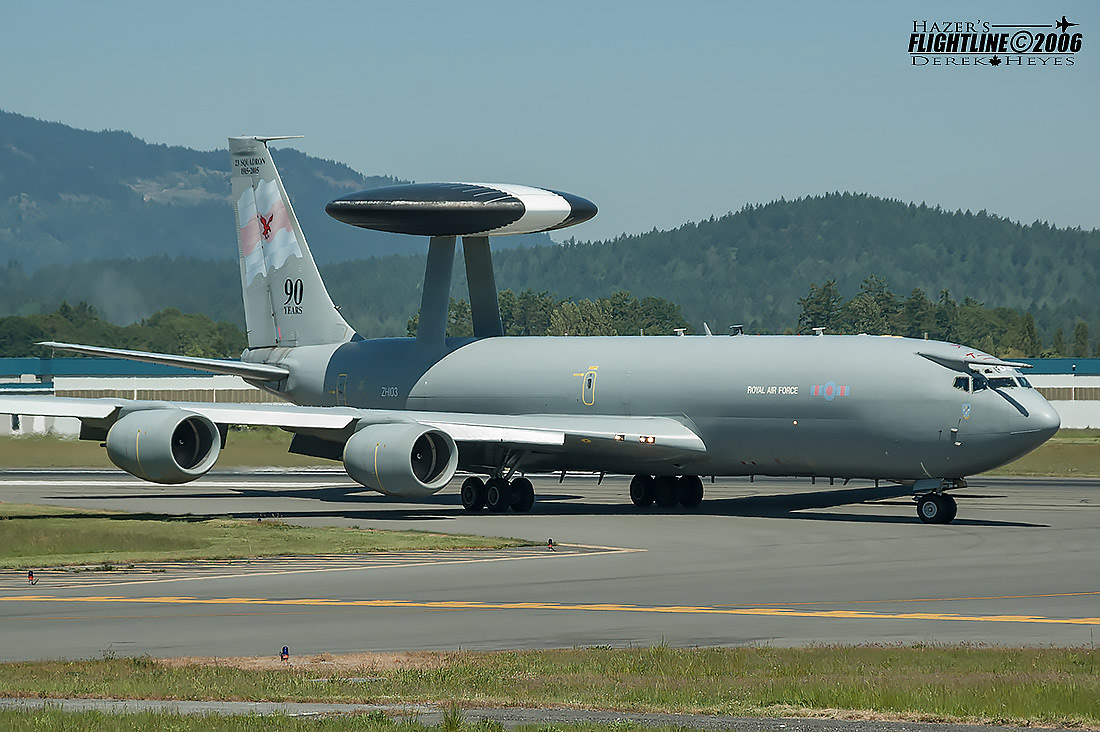

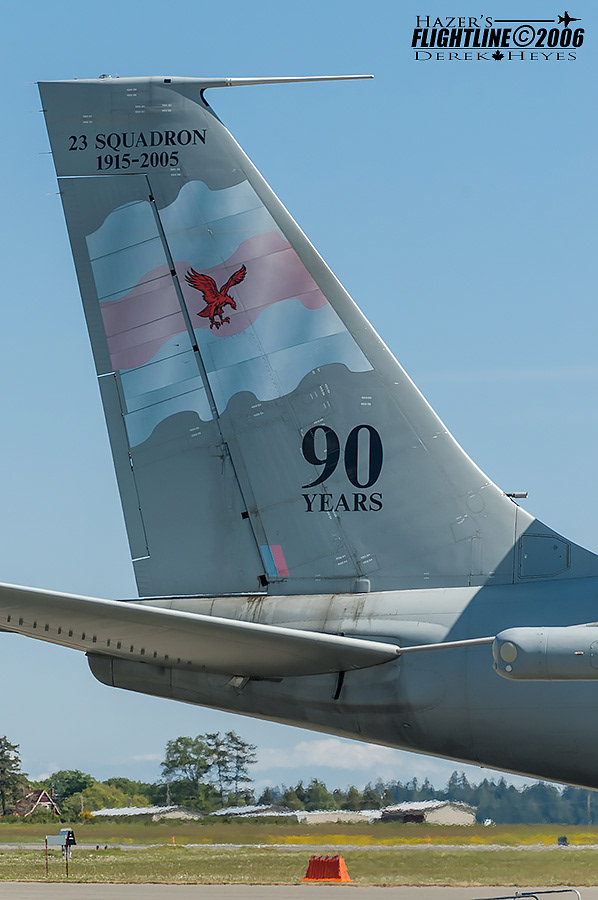

FUTURE OF TRIDENT FURY
The future looks bright for the exercise. With some details of next years exercise already coming to the surface. Some possibilities include more aircraft including some European fast jets coming over to play, the sinking of the Canadian warship HMCS Huron by F-16's, firing of AIM-120 AMRAAM air to air missile over the range and a larger ground force taking part. Other changes may include the date for Trident Fury to be be earlier in May so not to conflict with Canada's largest military exercise, Maple Flag. Afer next year, Trident Fury will become a bi-annual exercise. This is due to the fleets participation in the largest Naval exercise in the Pacific, RIMPAC.
The future looks bright for the exercise. With some details of next years exercise already coming to the surface. Some possibilities include more aircraft including some European fast jets coming over to play, the sinking of the Canadian warship HMCS Huron by F-16's, firing of AIM-120 AMRAAM air to air missile over the range and a larger ground force taking part. Other changes may include the date for Trident Fury to be be earlier in May so not to conflict with Canada's largest military exercise, Maple Flag. Afer next year, Trident Fury will become a bi-annual exercise. This is due to the fleets participation in the largest Naval exercise in the Pacific, RIMPAC.
I would like to thank PAO Captain Cheryl Robinson - 19 Wing Comox, PAO Captain Leah Byrne and Lieutenant(Navy) Rory Matheson - CFB Esquimalt, Captain Pierre "GRINGO" Grignon, Lieutenant Commander Jeff Hamilton, the crew of "STINGER 33" and the rest of the men and women aboard the HMCS Algonquin for all their support during Trident Fury.
Copyright 2006 - Derek Heyes






